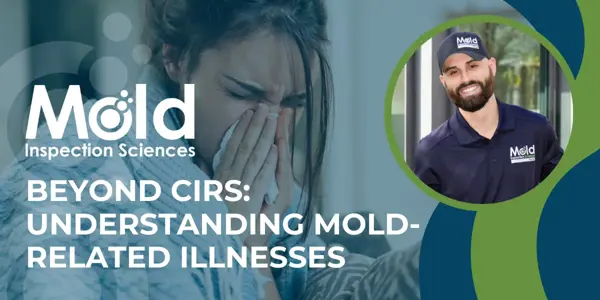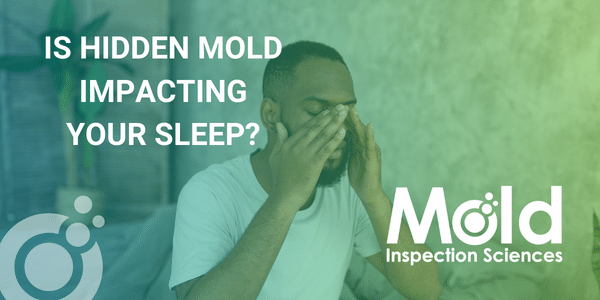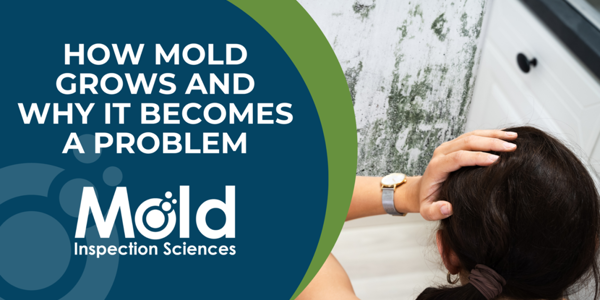Should You Be Concerned About Mold in Your HVAC System?
Understanding the health impact of HVAC mold and steps you can take to stay safe.

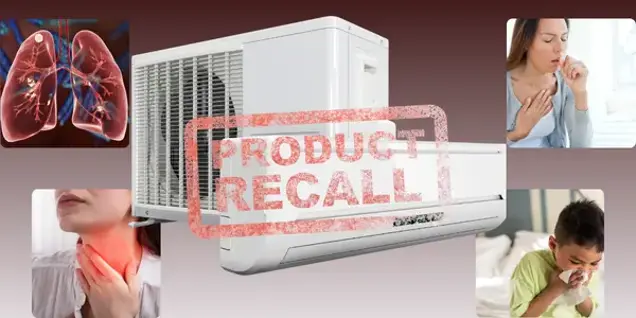
When it comes to your family’s health, mold is not something to take lightly. Air conditioning systems—designed to provide clean, cool air—can become breeding grounds for dangerous mold growth, spreading microscopic spores throughout your home with every cycle.
The recent recall of 1.7 million Midea air conditioning units has brought this hidden danger into sharp focus. At least 152 reports of mold buildup led to 17 individuals experiencing respiratory infections, allergic reactions, coughing, and sore throats. These were not isolated incidents—they reflect a widespread issue that many homeowners unknowingly face.
At Mold Inspection Sciences, our certified inspectors have worked with countless homeowners who discovered that their “reliable” air conditioning systems were compromising indoor air quality. The concerning reality? Most people don’t realize their AC system has a mold issue until health symptoms appear or worsen.
This guide explores why air conditioners are especially prone to mold growth, how to recognize early warning signs, and why a professional assessment is crucial to protecting both your home and your family.
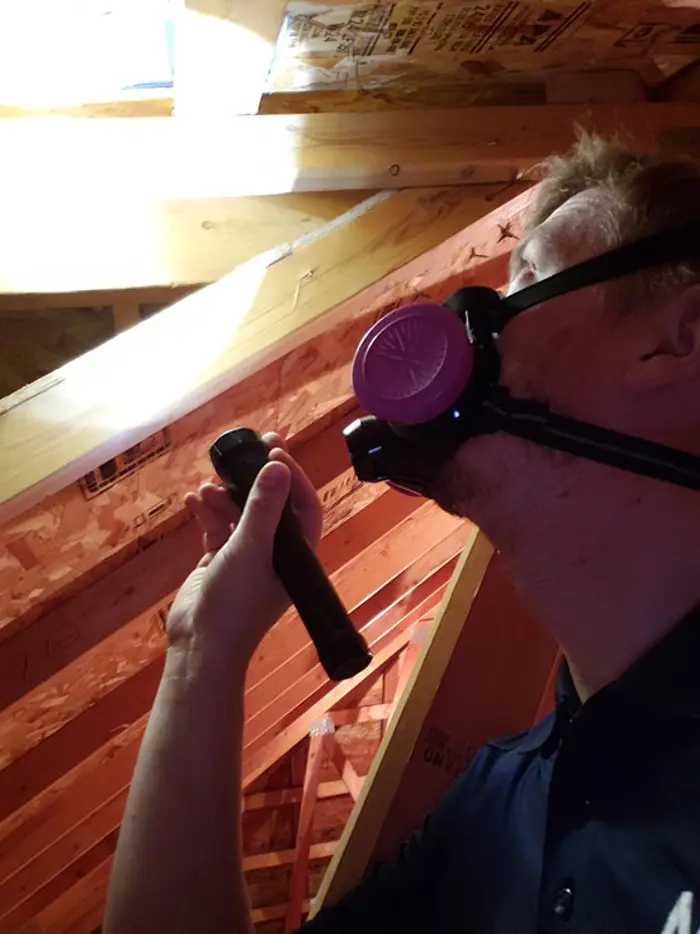
Why Air Conditioners Are Mold Magnets
Your air conditioning system creates ideal conditions for mold growth by combining three key elements: moisture, organic material, and dark, enclosed spaces. Cool, moist air moves through areas where dust and debris naturally accumulate. When water pools instead of draining properly, mold growth becomes almost inevitable.
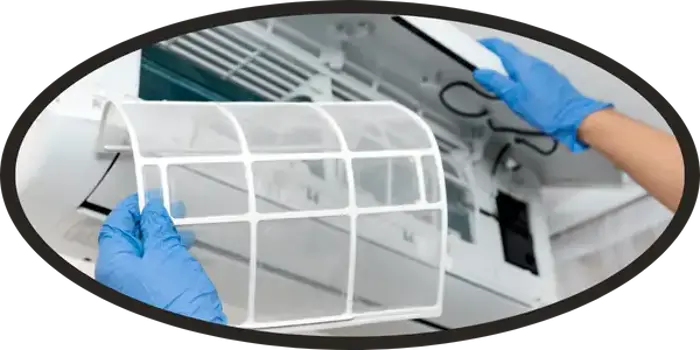
Air conditioners remove humidity through condensation—a process that should efficiently move moisture out of your home. However, problems can occur when:
- Drain pans or condensate lines become clogged with debris
- Humidity levels consistently remain above 60%
- Air filters are not replaced regularly, allowing dust to build up
- Systems lack proper maintenance and cleaning

Even well-maintained systems can develop mold issues if drainage problems arise, which is why regular professional inspections are essential for any HVAC system.
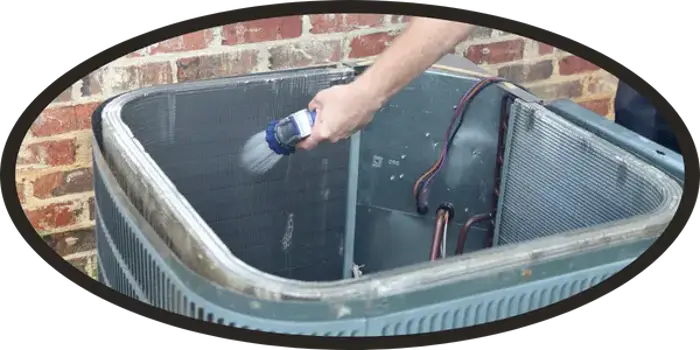
Health Risks You Can’t Ignore
When mold grows in your air conditioning system, it doesn’t stay contained. Each time your system runs, it can distribute microscopic mold spores throughout your home, creating continuous exposure that affects your entire family.
Mold exposure can lead to respiratory issues, including coughing, a stuffy nose, sore throat, wheezing, and itchy eyes, as well as skin problems such as rashes. For vulnerable populations—children, older adults, and those with asthma or compromised immune systems—the consequences can be severe. People with asthma or mold allergies may experience fever or shortness of breath, while individuals with weakened immune systems may develop lung infections.
The concerning reality? These health effects often develop gradually, making it difficult to recognize the connection between your air conditioning system and your symptoms until the problem becomes serious.
Warning Signs Your AC System Has Mold
Identifying mold in your air conditioning system early can help prevent minor issues from turning into serious health hazards. Unlike mold growth in visible areas, such as bathrooms, mold in an AC system often develops within hidden components where it can go undetected for months. Be aware of the following warning signs that indicate a professional inspection may be necessary.
Visual and Olfactory Indicators
- Musty odors when the system is operating
- Visible mold growth around vents, on filters, or inside accessible units
- Dark spots or discoloration on evaporator coils or ductwork
Health-Related Symptoms
- Persistent respiratory issues that worsen at home
- Allergy-like symptoms without a clear trigger
- Symptoms that improve when away from home for extended periods
System Performance Issues
- Higher energy bills due to reduced efficiency
- Poor temperature regulation despite consistent use
- Frequent filter clogs or unusual debris buildup
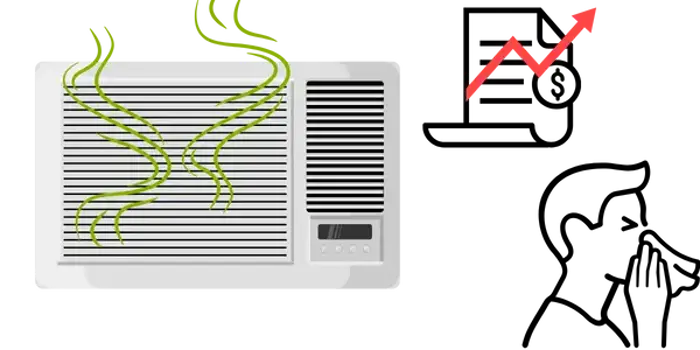
Immediate Action Steps
If You Suspect Mold in Your AC System
Step 1: Stop Using the System Immediately.
- Turn off your air conditioner at the thermostat and breaker
- Do not operate the system until a professional inspection is completed
- Use alternative cooling methods if possible (fans, window units in other rooms)
Step 2: Document Everything
- Take photos of any visible mold growth or water damage
- Record symptoms experienced by all household members, including dates and severity
- Note when symptoms occur (continuously, only when the AC runs or at certain times of day)
- Keep a log of musty odors, including their location and timing
Step 3: Conduct Initial Visual Assessment
- Check air vents for visible mold or dark discoloration
- Inspect accessible filter compartments (wear an N95 mask if possible)
- Look for water stains around the unit or ductwork
- Examine the condensate drain pan for standing water or mold
- Check the exterior unit to ensure proper drainage
Step 4: Contact Certified Professionals
- Schedule a comprehensive mold inspection with a conflict-free testing company
- Request quantitative microbial air sampling (indoor vs. outdoor comparison)
- Ensure the inspector uses professional equipment such as infrared cameras, moisture meters, and calibrated air pumps
- Ask about mold-related illness inspection protocols or specialized testing if health symptoms are present

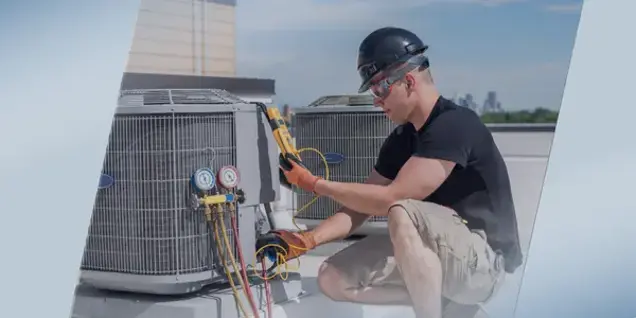
Prevention Strategies
- Filter Maintenance: Replace standard filters every 1–3 months, depending on usage and dust levels. Consider upgrading to high-efficiency filters (MERV 8–13) to capture more particles. Check filters monthly during peak usage seasons, and consider whole-house air purification systems for more comprehensive protection.
- Humidity Control: Maintain indoor humidity between 30% and 50%, using dehumidifiers if necessary. Install humidity monitors in multiple rooms to track conditions, and use exhaust fans in bathrooms and kitchens to reduce moisture levels. In high-humidity climates, consider installing a whole-house dehumidification system for consistent, year-round control.
- Regular System Maintenance: Schedule an annual professional HVAC inspection and cleaning to catch issues early. Clean evaporator coils yearly to prevent moisture and debris buildup and flush condensate drains with a diluted bleach solution every quarter. Inspect ductwork for leaks, especially in unconditioned areas such as attics and crawl spaces.
- Immediate Repairs: Address any water leaks around the unit within 24–48 hours, as standing water creates ideal conditions for mold growth. Repair damaged ductwork that allows moisture infiltration and seal gaps around ductwork in crawl spaces, attics, or basements to prevent humidity-related issues.
When Professional Inspection Is Essential
Health-Related Indicators: A professional inspection becomes critical when multiple household members experience respiratory symptoms simultaneously or when symptoms consistently worsen at home and improve when away. New-onset asthma or allergies without another clear explanation, chronic fatigue, brain fog, or headaches that correlate with time spent indoors also warrant professional assessment. Sinus infections that don’t respond to typical treatments may indicate ongoing exposure to mold from your HVAC system.
System-Related Warning Signs: Visible mold growth anywhere in or around the HVAC system requires immediate professional attention, as does the persistence of musty odors despite filter changes and routine cleaning. Watch for unusual debris or dark material coming from air vents, water stains around vents, ductwork, or the indoor unit, and any recent flooding or water damage that may have affected HVAC components.
High-Risk Situations: Certain scenarios call for proactive professional inspection even when no symptoms are present. Homes with immunocompromised residents, properties with a history of water damage or flooding, and older HVAC systems (15+ years) that haven’t undergone professional cleaning all pose higher risks. Homes in high-humidity climates without effective moisture control should also consider regular assessments—as should any property with an AC unit affected by a recall.
If you suspect that there may be mold present in your home — or you have questions about what to look for and what comes next. We’re here to help.

Call us on 1.800.619.6653 or send us email at [email protected]
You can also find more information about our CIRS Protocol and qPCR testing here.

The Importance of a Mold Assessment
At Mold Inspection Sciences, we’ve distilled over two decades of expertise into thousands of investigations, using proven, science-based inspection and testing methods to determine what’s happening inside a property and identify the right steps to restore healthy living and working environments.
Using state-of-the-art moisture detection and infrared technology, our mold consultants assess and identify areas of concern in your property—but that’s only one part of the process. Following the inspection, your consultant will recommend sampling based on your property’s specific needs and the inspector’s findings.
DIY approaches often miss critical mold issues, especially in complex HVAC systems. Our professional inspectors use specialized equipment that homeowners typically cannot replicate:
- Infrared cameras to detect temperature variations that indicate hidden moisture behind walls and in ductwork
- Moisture meters to measure dampness in building materials and HVAC components
- Calibrated air sampling equipment with professional-grade pumps for accurate readings
- Quantitative microbial air sampling that compares indoor and outdoor spore levels for proper context
Sampling is a vital part of any comprehensive mold or environmental investigation. It confirms the presence of environmental hazards and identifies both their type and concentration. These samples provide essential data points that offer a full picture of the property’s condition, the level of contamination, and the steps required to correct the issue(s) and restore the property to a healthy state—ultimately offering peace of mind.
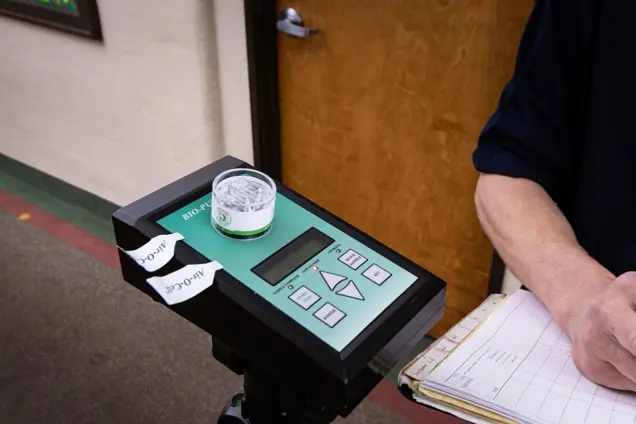
Take Action Today
The Bottom Line: If you’re experiencing unexplained respiratory symptoms or notice musty odors when your air conditioner runs, a professional inspection is essential. Don’t wait for symptoms to worsen—when it comes to your family’s health and indoor air quality, you deserve certainty, not worry.
If you have questions about a potential mold issue, don’t hesitate to contact one of our mold specialists. Call us at 1.800.619.6653 to schedule your professional mold inspection.

